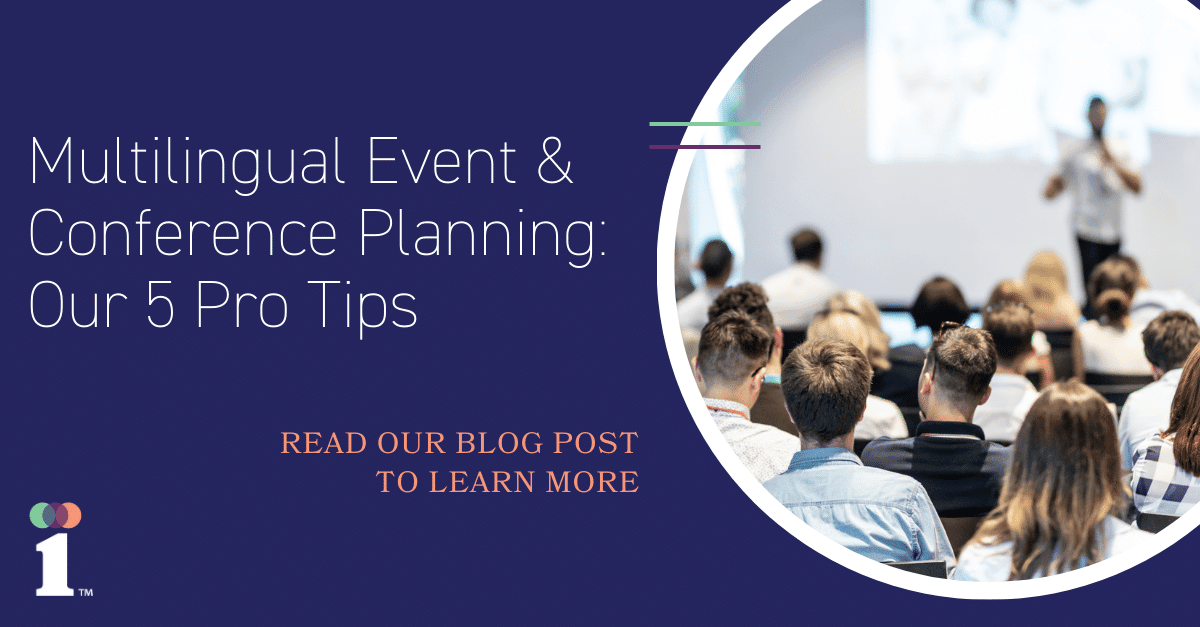
Conference planners and event organizers often need to plan multilingual events and are faced with the question of which interpretation solutions are best suited for their particular event or conference. As simultaneous interpretation solutions have evolved tremendously in recent years, conference planning can quickly become an even bigger undertaking than it already is.
That’s why we present event professionals with our five pro tips for planning an in-person event that requires live interpretation and live multilingual captioning.
1. Involve your simultaneous interpretation provider as early as possible.
Here’s a scenario that we encounter most often at Interprenet: The client comes to us very late in the event planning process. As a language services provider with 20 years of experience, we can’t stress enough how critical it is to plan for the use of interpretation, captioning and translation solutions right at the beginning of your event planning process. Involving your language services provider as early as possible will not only save you a lot of headaches, but often a lot of money as well.
2. Make sure the provider can offer the full range of simultaneous interpretation options available today.
When working with a language services provider, make sure they have a proven track record of providing the full range of simultaneous interpretation options available in the market today. Work with a provider who understands what you need, can help you navigate the various simultaneous interpretation options, and can deliver the ideal solution for your event.
3. Work with a provider who can expertly consult you on all the options.
Simultaneous Interpretation can be delivered to any attendee at the venue on any device, such as a smartphone, a tablet, a computer, a headset receiver, FM or infrared, or a combination of all of these. For large conferences with thousands of attendees, it is important that your language services provider can explain the pros and cons of each device for interpretation. Depending on WIFI network limitations or internet bandwidth costs, headset receivers may be a better option, even with the added labor costs of managing and distributing the devices. Simultaneous interpretation can be seamlessly transmitted to headset receivers without the need for interpreters to be physically present at the conference.
Watch our CEO, David Medrano, share 4 ways you can add interpretation to your in-person event 😀
4. Ask if your provider has the technical expertise and the equipment inventory to fulfill your needs.
Make sure your simultaneous interpretation vendor has the technical expertise to deliver all simultaneous interpretation solutions, including AV hardware, software, and platform integration, as well as the support needed to scale an event of any size. Your simultaneous interpretation provider should have the equipment inventory and resources to adapt to the changing and growing needs of your event.
5. Make sure the interpreters are professionally trained and certified.
If you are providing simultaneous interpretation at your event, one of the most important factors is the skill of your human interpreters, who will enable attendees to experience the conference content flawlessly in their preferred language. Make sure the conference interpreters you're using are trained and certified through recognized conference interpreting degree programs. A quality language services provider that specializes in simultaneous interpretation for conferences and events will be able to deliver this standard of quality.


